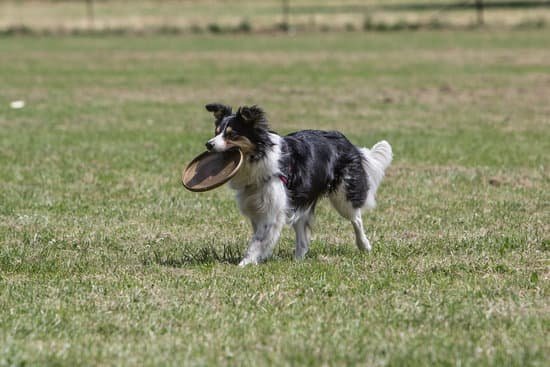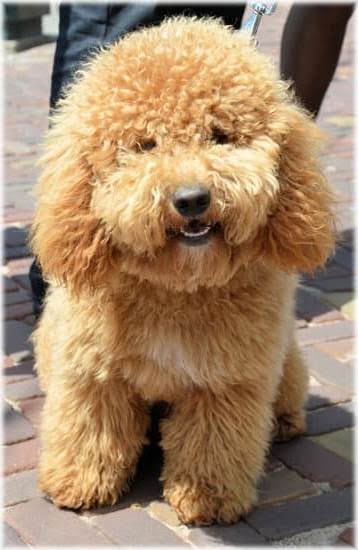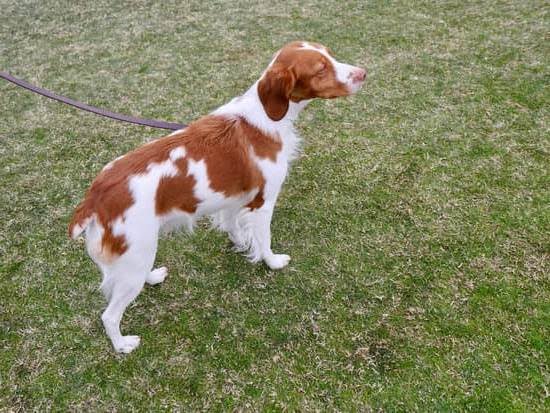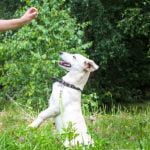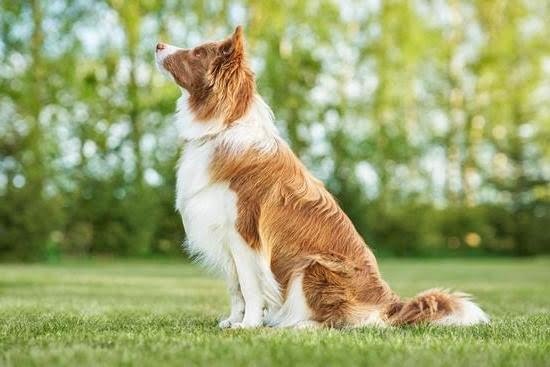Are you struggling with crate training an anxious older dog? It can be a challenging process, but it doesn’t have to be impossible. In this article, we will explore the best methods for crate training an older dog who struggles with anxiety. From assessing your dog’s anxiety level to providing comfort and support inside the crate, we will cover everything you need to know to successfully crate train your anxious older dog.
First, we’ll discuss the benefits of crate training for an anxious older dog. Then, we’ll delve into how to assess your dog’s anxiety level and determine if crate training is compatible with their needs. We’ll also provide guidance on choosing the right crate and introducing it in a positive and gentle manner.
Additionally, we will explore the importance of establishing a consistent crating routine for your anxious older dog and address common challenges and misconceptions in crate training. Lastly, we’ll discuss the gradual and slow approach to crate training an anxious older dog, as well as incorporating positive reinforcement and rewards to make the process more effective. Join us as we navigate through the process of crate training for an anxious older dog.
Assessing Your Dog’s Anxiety Level and Crate Compatibility
When it comes to crate training an anxious older dog, it is crucial to assess your dog’s anxiety level and their compatibility with crating. Not all older dogs will respond well to being crated, especially if they already have anxiety issues. Before starting the crate training process, it’s important to observe your dog in various situations to determine the level of anxiety they experience.
One way to assess your dog’s anxiety level is by observing their behavior when they are left alone. Do they become destructive, exhibit excessive vocalization, or engage in self-harming behaviors? These are signs of separation anxiety and can indicate that the dog may not be compatible with crate training. It’s also important to consider the overall temperament of your older dog – some dogs may find being crated comforting while others may become even more anxious.
Additionally, consider introducing the crate gradually to gauge your dog’s comfort level. You can place the crate in a common area and leave it open for your dog to explore at their own pace. If they show interest in the crate and seem relaxed inside it, this could be a positive indication that crate training could work for them.
Finally, consulting with a professional dog trainer or behaviorist can provide valuable insights into how to crate train an anxious older dog effectively based on their specific anxiety levels and compatibility with crating.
| Assessing Your Dog’s Anxiety Level | Key Considerations for Crate Compatibility |
|---|---|
| Observing behavior when left alone | Evaluating overall temperament |
| Introducing crate gradually | Consulting with professional trainer or behaviorist |
Choosing the Right Crate for Your Anxious Older Dog
When it comes to crate training an anxious older dog, choosing the right crate is essential for their comfort and safety. The first step is to assess your dog’s size and behavior to determine the appropriate crate size and type. For anxious dogs, a smaller, more enclosed space can provide a sense of security, so consider getting a crate that is just big enough for your dog to stand up, turn around, and lie down comfortably.
It’s also important to choose a crate that is well-ventilated and made of sturdy material. This will ensure that your anxious older dog has enough airflow while feeling secure in their designated space. Additionally, consider the door type of the crate – some dogs may do better with a front-facing door while others may feel more comfortable with a top-loading or side-loading door.
When introducing the crate to your anxious older dog, consider utilizing positive reinforcement techniques such as treats, toys, or familiar bedding inside the crate. This will help them associate the crate with positive experiences and reduce their anxiety about being confined in it. With the right crate choice and positive introduction, you can create a safe haven for your anxious older dog.
| Choosing the Right Crate Features | Examples |
|---|---|
| Appropriate Size | A small-sized crate for security |
| Ventilation | A wire or plastic crate with adequate ventilation |
| Positive Reinforcement | Treats, toys, or familiar bedding inside the crate |
Introduction to the Crate in a Positive and Gentle Manner
Introducing your anxious older dog to a crate in a positive and gentle manner is crucial for successful crate training. By following these steps, you can help your dog become comfortable and feel safe in their new “den”.
When introducing the crate to your anxious older dog, it’s important to take things slow. Place the crate in an area where your dog spends a lot of time, such as the living room or bedroom. Leave the door open and allow your dog to explore the crate at their own pace. Placing some treats or toys inside can help create a positive association with the crate.
Another important step in introducing the crate is to make it as inviting as possible. You can add blankets, cushions, or even a piece of your clothing with your scent to make the space cozy and familiar for your anxious older dog. This will help them feel more relaxed and secure inside the crate.
To further encourage a positive association with the crate, consider feeding your anxious older dog their meals inside the crate. Start by placing their food bowl near the entrance of the open door and gradually move it further inside as they become more comfortable. This will help create a positive routine that associates the crate with something enjoyable for your dog.
By following these steps and taking a gentle approach, you can help your anxious older dog see their crate as a safe haven rather than a source of stress or anxiety. With patience and consistency, you can make the crate training experience as stress-free as possible for both you and your beloved pet.
Establishing a Consistent Crating Routine for Your Anxious Older Dog
Creating a Safe and Comfortable Space
When establishing a consistent crating routine for your anxious older dog, it’s essential to create a safe and comfortable space inside the crate. Add soft bedding, familiar toys, and even an item of clothing with your scent to help reassure your dog while in the crate. It’s important to make the crate a positive environment where your dog feels secure and at ease.
Gradual Introduction to Crating
Introduce your anxious older dog to the crate gradually, allowing them to explore it at their own pace. Start by leaving the crate door open and encouraging your dog to go in with treats or favorite toys.
Once they are comfortable entering and exiting the crate on their own, start closing the door for short periods of time while you are still within sight. Gradually increase the duration as your dog becomes more at ease with being confined in the crate.
Consistency Is Key
Consistency is crucial when establishing a crating routine for an anxious older dog. Stick to a regular schedule for crating, such as during meal times or when you need to leave the house. Consistency can help alleviate anxiety as your dog begins to associate the crate with predictable patterns and positive experiences.
By following these steps, you can establish a consistent crating routine for your anxious older dog that helps reduce their anxiety and provides them with a safe space when needed.
Dealing With Separation Anxiety and Crate Use
Understanding Separation Anxiety in Older Dogs
Separation anxiety in older dogs can be a challenging issue to deal with, especially when trying to crate train them. It’s important to understand that separation anxiety is a condition where the dog experiences extreme distress when separated from their owners. This can lead to destructive behavior, excessive barking, and other issues when left alone. Crate training can help provide a sense of security for anxious older dogs, but it’s essential to address the underlying anxiety as well.
Tips for Using the Crate to Manage Separation Anxiety
When using the crate to manage separation anxiety in older dogs, it’s crucial to introduce the crate gradually and positively. Start by leaving the crate door open and placing treats or toys inside to encourage your dog to explore the space on their own terms.
Once they are comfortable with the crate as a safe and positive environment, begin practicing short periods of crating while you are at home. This will help your dog associate the crate with positive experiences before being left alone.
Adding Positive Reinforcement for Crate Use During Absences
To help an anxious older dog associate the crate with positive experiences during absences, it’s important to use positive reinforcement techniques. Before leaving your dog alone in the crate, offer rewards such as special treats or toys that they only receive when crated.
This will create a positive association with being in the crate and make it a more enjoyable experience for your dog. Additionally, providing background noise such as calming music or leaving an article of clothing with your scent can also help reduce separation anxiety when crated.
By implementing these tips for dealing with separation anxiety and crate use, you can effectively help your anxious older dog adjust to being crated and manage their anxiety in a gentle and supportive manner.
Addressing Common Challenges and Misconceptions in Crate Training Anxious Older Dogs
Crate training an anxious older dog can be a challenging process, and it’s important for pet owners to address common challenges and misconceptions in order to make the experience as smooth as possible for their furry companions. One common misconception is that crate training is cruel or inhumane, especially for older dogs.
However, when done properly, crate training can actually provide a sense of security and comfort for anxious older dogs. It’s essential to understand the benefits of crate training and how it can help ease anxiety in older dogs.
Another challenge that pet owners may face when crate training an anxious older dog is resistance from their furry friend. Older dogs may have developed a fear or aversion to being confined, so it’s crucial to introduce the crate in a positive and gentle manner.
This involves creating a safe and comfortable space inside the crate, gradually introducing the dog to the crate using treats and positive reinforcement, and allowing the dog to explore the crate at their own pace.
Furthermore, some pet owners may struggle with the idea of leaving their anxious older dog in a crate, especially if they have separation anxiety. It’s important to address this challenge by slowly acclimating the dog to spending time alone in the crate while providing comfort and support.
This can be done through gradual increments of alone time in the crate, along with providing familiar items such as blankets or toys for comfort. Overall, addressing these common challenges and misconceptions will help pet owners successfully crate train their anxious older dogs.
Providing Comfort and Support Inside the Crate for an Anxious Older Dog
When crate training an anxious older dog, providing comfort and support inside the crate is essential for their overall well-being and success in the training process. The crate should be a safe and comfortable space where your dog feels secure and relaxed, rather than a source of added stress or anxiety. Here are some tips on how to provide comfort and support inside the crate for an anxious older dog.
Firstly, it’s important to choose the right bedding for your dog’s crate. Opt for soft, comfortable bedding that provides adequate support, such as a cozy blanket or cushion. This will help create a positive association with the crate and make it a welcoming environment for your anxious older dog.
Additionally, consider including familiar items in the crate, such as their favorite toy or an article of clothing that carries your scent. These familiar scents and objects can help alleviate anxiety and provide a sense of security for your older dog while in the crate.
Furthermore, ensure that the crate is placed in a quiet and peaceful area of your home to minimize external stressors that could contribute to your dog’s anxiety. Creating a calming environment around the crate will further promote relaxation and comfort for your anxious older dog during the training process.
By following these strategies for providing comfort and support inside the crate, you can help ease your anxious older dog’s transition into crate training and create a positive experience for them. Remember to be patient and observant of your dog’s behavior to tailor their crate environment to meet their individual needs effectively. With time and consistent effort, you can help alleviate your older dog’s anxiety associated with crating.
Gradual and Slow Approach to Crate Training an Older Anxious Dog
Crate training an older anxious dog requires a gradual and slow approach to ensure their comfort and confidence in the crate. It is essential to introduce the crate in a positive and gentle manner, respecting your dog’s anxiety level and allowing them to adjust at their own pace. Here are some steps on how to crate train an anxious older dog in a gradual and slow approach:
1. Introduce the crate as a safe haven: Start by placing the crate in a quiet and peaceful area of your home where your dog feels comfortable. Keep the door open and make it inviting by adding familiar bedding or toys inside.
2. Encourage exploration: Allow your older anxious dog to explore the crate at their own pace without any pressure. You can place treats or favorite toys near the entrance of the crate to create positive associations.
3. Gradual confinement: Once your dog feels more comfortable around the crate, start closing the door for short periods while they are relaxed inside. Gradually increase the duration as your dog becomes more accustomed to being confined in the crate.
It’s crucial to be patient throughout this process and never force your older anxious dog into the crate. The goal is to create a positive association with the crate, providing them with a secure space where they feel safe and relaxed.
Remember to use positive reinforcement, patience, and consistency as you gradually progress through each step of crate training for your anxious older dog. With time and dedication, your dog can learn to see their crate as a comforting sanctuary rather than a source of stress or anxiety.
Adding Positive Reinforcement and Rewards in Crate Training for an Anxious Older Dog
In conclusion, crate training an anxious older dog can be a challenging process, but with patience, understanding, and the right approach, it can be a highly beneficial tool for managing your dog’s anxiety. By incorporating positive reinforcement and rewards into the training process, you can help your older dog associate the crate with safety and comfort.
One of the keys to successful crate training for an anxious older dog is to use positive reinforcement techniques such as treats, praise, and toys to create a positive association with the crate. This can help reduce anxiety and fear associated with being crated, making it a much more comfortable experience for your dog.
It’s important to remember that every dog is unique, so what works for one may not work for another. It’s essential to be patient and consistent in your approach to crate training an anxious older dog.
By following the steps outlined in this article, assessing your dog’s anxiety level and compatibility with crate training, choosing the right crate, introducing the crate gently and positively, establishing a consistent routine, addressing separation anxiety, providing comfort inside the crate, and taking a gradual approach – all while incorporating positive reinforcement – you can successfully crate train your anxious older dog. With dedication and compassion, you can help your older furry friend feel more secure and at ease in their crate.
Frequently Asked Questions
Can You Crate Train a Senior Dog?
Yes, you can crate train a senior dog. However, it may take more time and patience, especially if the dog has never been crated before. It’s important to make the crate a comfortable and positive space for them.
At What Age Is It Too Late to Crate Train a Dog?
It is not necessarily too late to crate train a dog at any age, including senior dogs. While it may take more time and effort compared to crate training a puppy, older dogs can still learn to associate the crate with safety and comfort.
Should You Crate an Anxious Dog?
Whether or not to crate an anxious dog depends on the individual dog and their specific needs. In some cases, a crate can provide a safe haven for an anxious dog, while in other cases it may exacerbate their anxiety. Consulting with a professional trainer or behaviorist is recommended in these situations.

Welcome to the blog! I am a professional dog trainer and have been working with dogs for many years. In this blog, I will be discussing various topics related to dog training, including tips, tricks, and advice. I hope you find this information helpful and informative. Thanks for reading!

